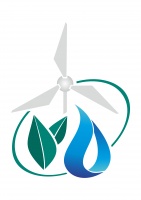Application of furrow-based counter irrigation
| Title | Application of furrow-based counter irrigation |
|---|---|
| Category of tools | Irrigation technique and technology |
| Usability of practice for adaptation to climate change | Moderate |
| Implemented by | Central Asian Research Institute of Irrigation (SANIIRI) |
| Used by |
Country: Uzbekistan Province: Xorazm Region District: Urganch District |
| Practice also applied in the following localities |
Khankin District of Khorezm Region |
| Local specifics |
Khorezm Region lies in the northwest of Uzbekistan (between the latitudes of 40N and 42N and longitudes of 60E and 62E). The Region stretches for 280 km from northwest to southeast, and for 80 km – from west to east. The adyr relief is mainly formed by moist-type playa and, to a lesser extent, by meadow and grey-dessert soils; the depressions relief is formed by sands. |
| Photos |
|
| Practice usage period |
Start date: 01.01.2004 End date: 31.12.2016 |
| Problem solved through this practice |
Inefficient field-level use of irrigation water |
| Tools used in the practice |
Technology of furrow-based counter irrigation |
| Description of the practice and its results |
Technology applicability In the majority of Central Asian countries, irrigated agriculture is based on flooding irrigation (ex.: wheat) and/or furrow-based irrigation (other crops). Against the background of climate change and global water shortage, the traditional and/or currently practiced irrigation methods have lost their relevance and are no longer justified, in particular, in the Aral Sea area. In addition, watering the whole field of uneven relief based on traditional furrow-based technique requires long time. In many cases, traditional watering leads to uneven water distribution (alternating dry and bogging spots) across the field and rising ground water level. The suggested technology of counter irrigation is suitable for watering areas with even/flat relief, i.e. flat/lowland territories of Central Asian countries. Technology description The technology is quite simple and consists of simultaneous irrigation of a field from two sides. It was appraised in Uzbekistan’s northwestern part within the framework of the ZEF/UNESCO Project. The technology’s pilot application demonstrated that furrow-based counter irrigation can be used as a technical option of irrigating undeviating (even) sites and increases water efficiency due to more uniform water distribution along furrows. This effective water-conservation technology has been already widely tested in Central Asian countries, including Uzbekistan (Syr Darya and Khorezm Regions) by SANIIRI. Advantages
|
| Lessons learnt and recommendations made |
Lessons learnt: The furrow-based counter irrigation technology is rather simple (entails simultaneous irrigation of a field from both sides) and represents a justified technical option of irrigating undeviating (even) relief land and increasing water efficiency due to more uniform water distribution along furrows. Recommendations: The irrigation technology is recommended for application by farmers prior to controlling ground water level and enhancing land reclamation condition via more radical measures. Under the condition of available investment, this watering method can be widely introduced on engineered basis. |
| Source of practice |
|
| Brief information on the project |
Project beneficiaries: water consumers and WUAs. Project implementer: Central Asian Research Institute of Irrigation (SANIIRI) |
| Funding source | ZEF/UNESCO in the Republic of Uzbekistan |
| Information sources |
1) Reference Book on climatically optimized investment in rural areas of the Aral Sea Basin (based on the examples of Uzbekistan and Tajikistan), Tashkent 2016; 2) Paluashova, G.K., Shirokova, Yu.I. “Efficiency of furrow-based counter irrigation of cotton in Khorezm conditions” (http://www.cawater-info.net/bk /improvement- irrigated-agriculture/files/paluashova-shirokova.pdf); 3) Paluashova, G. (2005), “Investigating land saline regime due to changed irrigation technology in the conditions of Khorezm Oasis. Materials of “Scientific Support as a Factor of Sustainable Water Sector Development” International Research and Applied Conference (Taraz, Kazakhstan). |
| Form submission date | 18.05.2018 |
| Print Compare with other practice |




